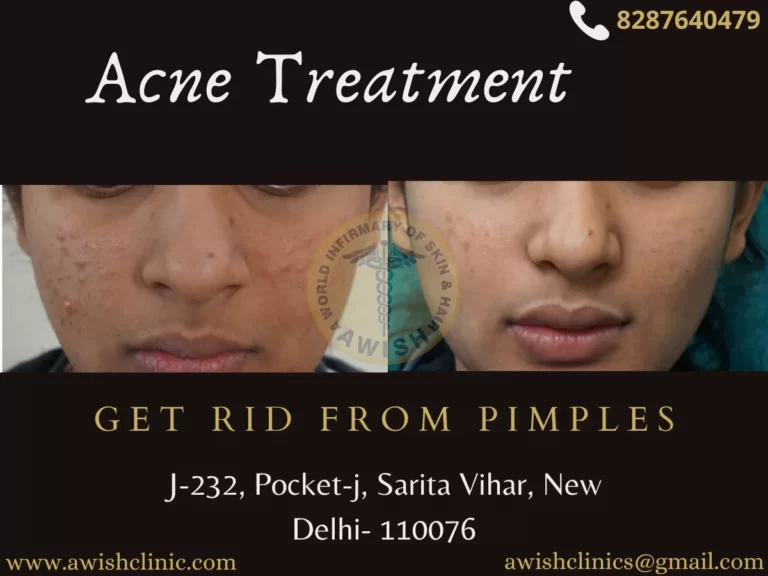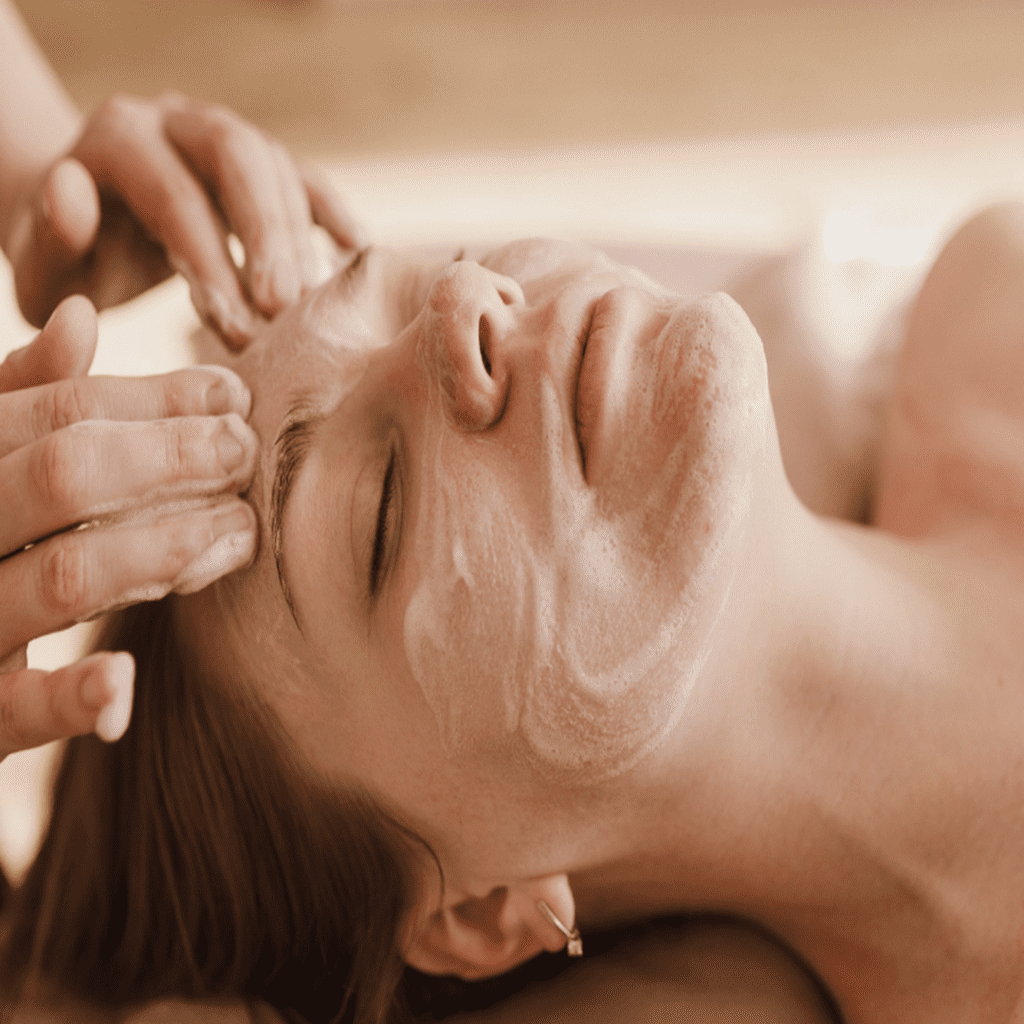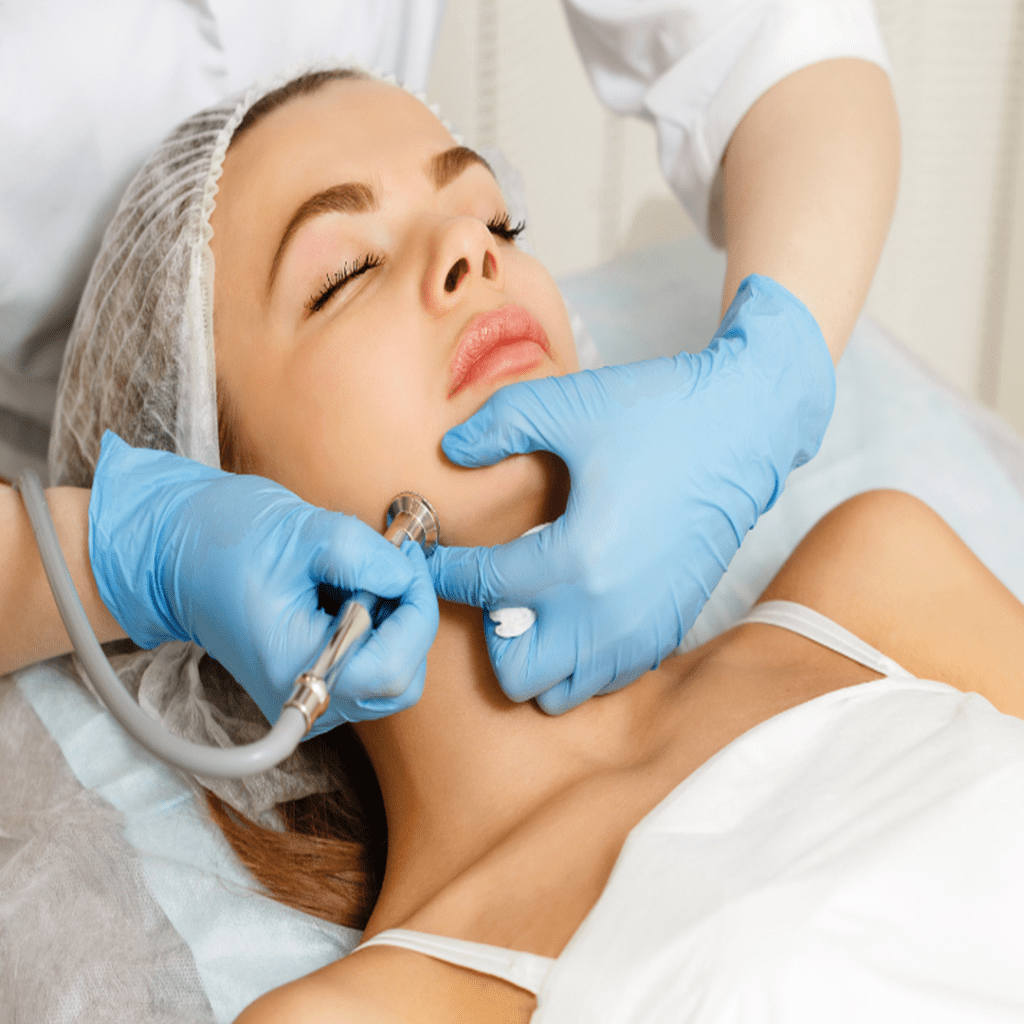Acne Scars Treatment
Acne Scar Treatment
Acne is a common skin disease that generally results in scarring. Acne Scars treatment secondary to acne https://www.awishclinic.comcan lead to physical disfigurement, and the psychosocial impact can be profound. Early and adequate treatment of acne is the best means to minimize and prevent acne scarring. Acne scars look worse than acne, Consult Dr. Vijay Kumar and find an apt Acne Scar Treatment in Delhi.
Although various therapies may reduce the prominence of acne scars, no cure obliterates acne scars. A multimodality approach to Acne scar treatment is usually necessary to achieve the best cosmetic results. The selection of a therapy method is based upon factors such as the type and degree of acne scarring, patient preference, side effects, cost, and treatment availability.
Acne scar treatment refers to a range of procedures and techniques aimed at minimizing the appearance of acne scars on the skin. Acne scars can be a result of severe or prolonged acne, leaving behind indentations, uneven skin texture, or discoloration. Acne scar treatments target these scars and work to improve the overall appearance of the skin. There are various treatment options available, including laser therapy, chemical peels, micro-needling, and surgical procedures. Laser therapy uses focused beams of light to stimulate collagen production and resurface the skin, reducing the appearance of scars. Chemical peels involve applying a solution to the skin to exfoliate the top layers, promoting skin regeneration and minimizing scar visibility.
Micro-needling, also known as collagen induction therapy, involves creating controlled micro-injuries to the skin using tiny needles. This stimulates collagen production and promotes skin rejuvenation, resulting in smoother, more even skin texture. can be injected into depressed acne scars, plumping them up to create a smoother surface.
Surgical procedures, such as subcision or punch excision, are recommended for more severe or deep scars. These techniques involve physically releasing scar tissue or excising the scar and suturing the skin for improved healing.
The choice of treatment depends on factors such as the type, severity, and location of the acne scars, as well as individual preferences and goals. It is best to consult with a dermatologist or skincare professional to determine the most suitable treatment plan for your specific situation. Acne scar treatments typically require multiple sessions spaced over several weeks or months to achieve optimal results. The downtime and recovery period can vary depending on the chosen treatment, ranging from minimal to a few days of redness, swelling, or peeling.
Overall, acne scar treatments can significantly improve the appearance of acne scars, enhancing skin texture, and restoring confidence. It is important to have realistic expectations and to follow post-treatment care instructions for the best outcomes. Consulting with a qualified professional will ensure personalized treatment and guidance throughout the process.

Pathogenesis of Acne scar Treatment
Acne scarring represents an altered wound healing response to cutaneous inflammation, leading to an imbalance in matrix degradation and collagen biosynthesis. Although scarring is a common consequence of inflammatory acne vulgaris, not all patients develop scarring. The reasons for discrepancies in the propensity to scar are not clear.
One theory focuses on the nature of the inflammatory response in determining which patients develop scarring. This theory is supported by an immunohistochemical study of 8 patients not prone to acne scarring and 11 patients prone to acne scarring. Individuals from early lesions from patients who were not inclined to acne scarring demonstrated a large, active, nonspecific immune response that subsided with lesion resolution. In contrast, patients prone to acne scarring had a smaller, more specific immune response in early lesions increased and activated in resolving lesions. This persistent inflammation in healing tissue may contribute to scarring.
CLASSIFICATION Of Acne scars Treatment
Acne scars can be divided based upon morphology into atrophic scars and hypertrophic scars. Maybe, patients have more than one type of scar.
✔️ Atrophic Scars
Atrophic scars, the most common type of acne scars, are caused by the destruction and loss of collagen in the dermis and present as indentations in the skin. Destructive inflammation in the deep dermis and subsequent contraction is thought to result in the indented appearance.
Atrophic scars may be subclassified into ice pick, rolling, and boxcar scars.
✔️ Hypertrophic Scars And Keloids
Hypertrophic acne scars and keloids are less common than atrophic acne scars and are characterized by collagen gain after resolving an acne lesion, resulting in a firm, raised papule or plaque. Hypertrophic scars do not spread beyond the margin of the original wound. In contrast, keloids extend beyond the margin of the original wound.
Overall, high-quality trials of interventions for acne scars are lacking. A well-organized review of randomized trials found insufficient evidence to recommend any particular intervention as a first-line treatment. More high-quality placebo-controlled trials are needed to clarify the efficacy of treatments. The treatment approach reviewed here is based upon a review of the available evidence and consideration of the practical aspects of treatment.

Chemical peels For Acne scars Treatment
Chemical peels can be effective treatments for acne scars. As with laser resurfacing, injury to the skin caused by chemical peels can stimulate a wound healing response with collagen remodeling.
Chemical peels are classified into superficial, medium-depth, and deep chemical peels according to skin injury depth.
Dermabrasion
Although acne scars were previously one of the most common indications for dermabrasion, the use of dermabrasion for acne scars has fallen significantly since the rise in the use of laser resurfacing therapy. However, in skilled hands, dermabrasion can be highly effective for severe acne scarring.
Dermabrasion involves using tools (e.g., high-speed brush, diamond cylinder, frail, or silicon carbide sandpaper) to remove the epidermis or epidermis and part of the dermis. An advantage of the procedure is that it allows the clinician to etch scar edges precisely without thermal injury. However, dermabrasion is highly operator-dependent, requires meticulous intraoperative assistance, and has the potential for severe postoperative scarring, pigmentation, and milia formation.
Microdermabrasion is a more simple procedure in which abrasive crystals (e.g., aluminum oxide crystals) are propelled onto the skin within a controlled vacuum suction system. The depth of abrasion during microdermabrasion remains in the epidermis. Thus, improvement in acne scars after microdermabrasion is minimal.


Skin Needling
Skin needling procedures can improve acne scars. Like fractional lasers, needling procedures induce small columns of damage in the epidermis and dermis, leaving intervening skin untouched. A needling device typically consists of a circumferentially studded cylinder with 1 to 2.5 mm long needles. The device is rolled over the skin’s surface to form numerous perforations in the epidermis and dermis to stimulate neo collagenases. Advantages of skin needling include low cost, a relatively short recovery period (two to three days), and a shallow risk for post inflammatory hyperpigmentation. These micro-injuries stimulate the skin’s natural healing response, triggering the production of collagen and elastin, essential proteins that promote skin rejuvenation and improve its texture and appearance. Skin needling can help reduce the appearance of acne scars, fine lines, wrinkles, and hyperpigmentation. It also enhances the absorption of skincare products, maximizing their effectiveness. This procedure is suitable for various skin types and can be performed on the face, neck, and other body areas. With minimal downtime and impressive results, skin needling is a popular choice for individuals seeking skin rejuvenation and a more youthful complexion.
Ablative fractional laser resurfacing for Acne scars
Although fractional ablative lasers (Er: YAG, yttrium scandium-gallium-garnet [Er: YSSG], and CO2 lasers) can improve acne scars, we favor nonablative fractional laser resurfacing when it is available because available evidence suggests that ablative fractional laser treatment is associated with more significant side effects and little extra benefit in response to treatment. Ablative fractional lasers may be useful for treating focal areas of hypertrophic and tethered scarring.
Cross Technique (Chemical Reconstruction Of skin scars technique)
- Indication: Ice pick and narrow boxcar scars.
- Description: A high-strength trichloroacetic acid (TCA) peel solution (100%) is placed directly in the base of scars to ablate the epithelial wall and to promote dermal remodeling.
Other therapies for Acne scars
In our experience, other light-based devices used to treat vascular lesions, such as the potassium titanyl phosphate (KTP) laser and intense pulsed-light devices, can be effective for scar erythema. In addition, marked clinical improvement in post inflammatory erythema in acne scars has been reported after non ablative fractional laser treatment.
We complete your Wish See Our Videos
pre-posts
Our Clients
Testimonials
I have struggled with acne scars for years, and I finally decided to seek treatment. I opted for laser therapy, and I am amazed at the results. After a few sessions, my scars have significantly faded, and my skin looks smoother and more even. The procedure itself was relatively painless, and the downtime was minimal. I'm so glad I made the decision to treat my acne scars, and I highly recommend laser therapy to anyone dealing with similar concerns.

Aanchal Chadha
Delhi, India
I had acne scars on my cheeks that made me self-conscious and affected my confidence. I decided to try micro-needling after hearing about its effectiveness. I must say, it has been a game-changer for me. The treatment was slightly uncomfortable, but not unbearable, and the results are worth it. My scars have visibly diminished, and my skin feels rejuvenated. I can't thank my dermatologist enough for recommending micro-needling. It has truly transformed my skin and boosted my self-esteem.

Mehak Siddiqui
